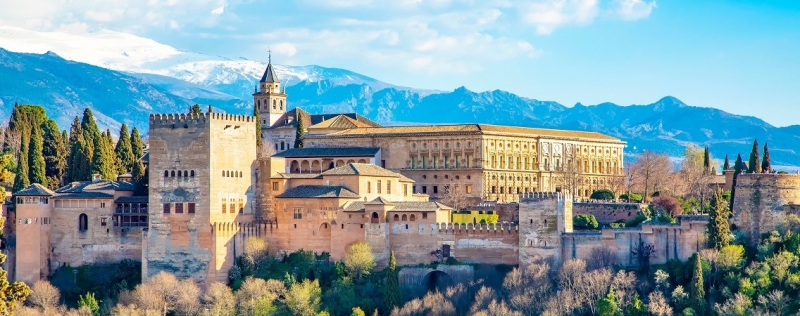
In the south of Spain lies the region of Andalusia, and surrounded by the majestic Sierra Nevada mountains lies Granada, a city where history lives. Until the end of the 15th century, it remained the last center of Muslim culture on the Iberian Peninsula.
People come here not only because of the amazing fusion of cultures, but also for relaxation in old authentic bars, fortified sweet wine and hiking in the mountains. We tell you what to see in Granada and its surroundings.
Entry rules
Russians will need a passport with a Schengen visa. Now Spain is considered one of the most loyal European countries in terms of document requirements. The visa fee is 80 euros for an adult (about 5,800 rubles*).
How to get there
There are no direct flights from Russia. First, from Moscow you need to fly to Istanbul or Dubai, and from there to Barcelona or Madrid. You can get to Granada by plane, domestic airlines, train or bus. Ticket prices start from 120,000 rubles* round trip.
Where to stay
Hotel Inglaterra (rating 8.8) – a small hotel in the city center, about a five-minute walk to the main attractions. A night in a standard room costs from 5,500 rubles*.
Allegro Granada By Barceló(rating 8.6) – hotel with a rooftop pool. The cost of a standard room starts from 7,000 rubles*.
Hotel Boutique Puerta de las Granadas (rating 8.7) – a boutique hotel with panoramic floor-to-ceiling windows located in the city center. A night in a standard room costs from 14,400 rubles*.
Parador de Granada (rating 8.8) – a hotel in a 15th-century monastery on the territory of the Alhambra Palace. A night will cost at least 31,800 rubles*.
What to see
Alhambra Palace
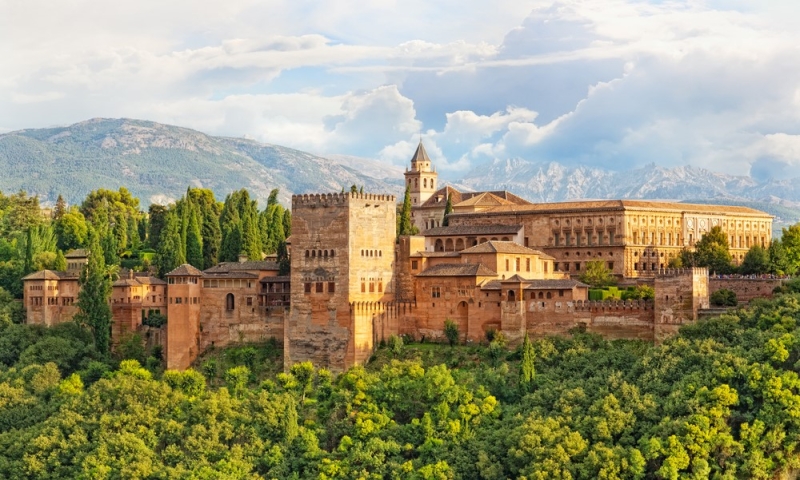
This majestic Moorish castle was built in the 13th century from red stone (by the way, the name means “red” in Arabic). During the day, depending on the position of the sun, the color of the walls changes to pink.
Alhambra stands on top of a hill. The territory has green gardens with orange trees, which offer views of Granada. Inside the palace you will find walls decorated with tiles. There are courtyards with fountains hidden throughout the castle – if you get tired of wandering around the halls, you can relax here and cool off on a hot day.
The palace is open from 8:30 am to 8 pm, but on some days there are night tours. The entrance ticket costs 14 euros (about 1,250 rubles*).
Alhambra is located on the outskirts of the city, walking from the center of Granada is about 30 minutes uphill. You can also get there by city buses C30 or C32, the trip takes 10 minutes.
Generalife Palace
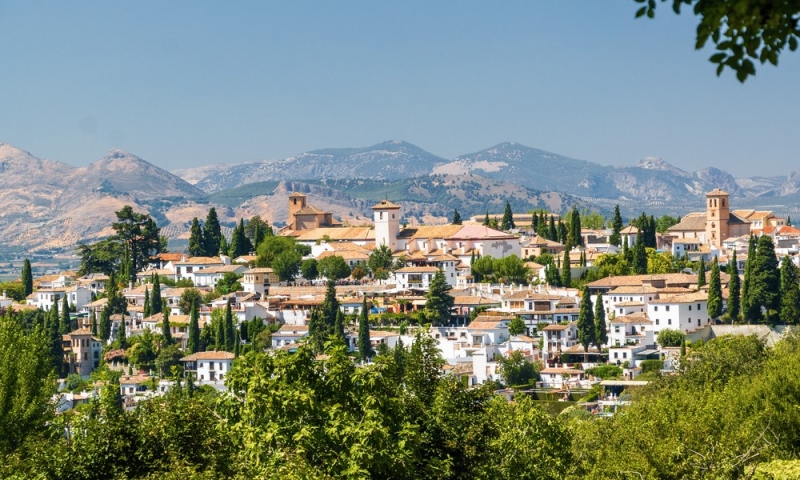
It is located near the Alhambra Castle, a 15-minute walk. The Generalife was the summer palace of the rulers of the Nasrid dynasty and is a cluster of buildings with many gardens between them. Now this is a real oasis in sunny Granada. It is believed that the Moorish gardens are best preserved in Spain.
Generalife’s green areas are designed like the courtyards of castles. To the left and right of the main paths are rectangular pavilions. Inside the massive stone walls there are fountains, a large swimming pool and a rose garden.
Granada Cathedral
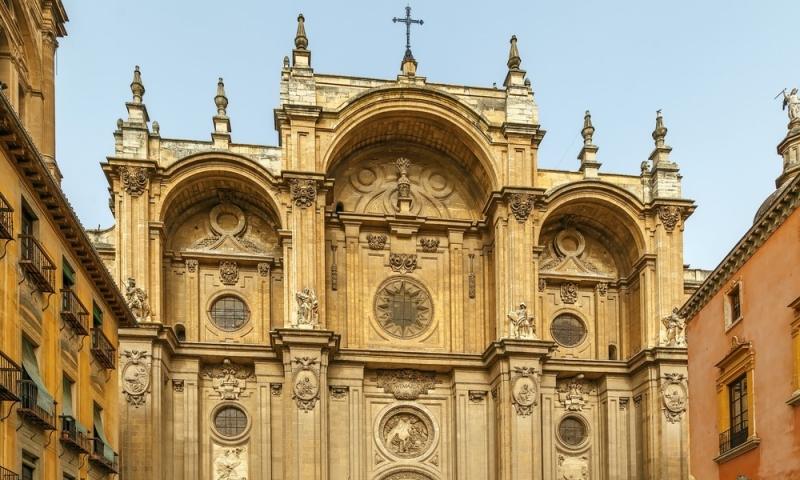
It was built on the site of the former Grand Mosque in an attempt to eradicate the Islamic heritage. The Cathedral is an iconic example of Renaissance architecture.
The inside is no less beautiful than the outside – the interior has gold leaf and stained glass, and the abundance of stone arches and columns is impressive. The entrance ticket costs 5 euros (about 450 rubles*), visitors are given a free audio guide. The cathedral is open every day from 10 a.m. to 6 p.m., on Sundays from 3 p.m.
Royal Chapel
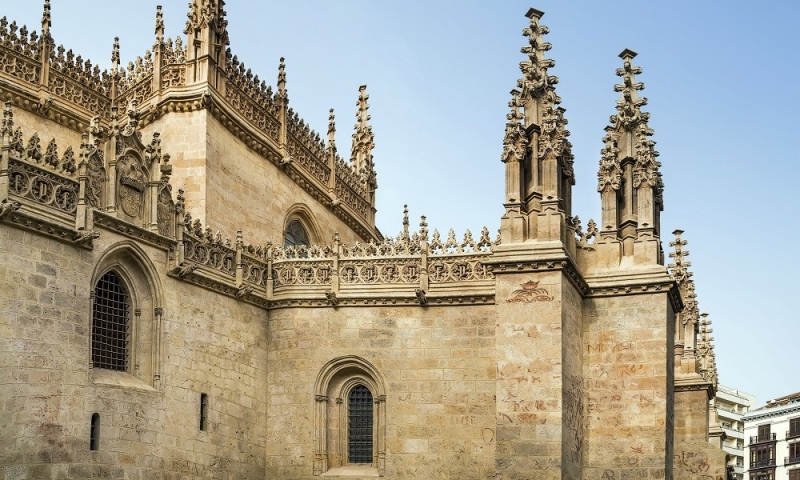
The tomb of the Catholic kings (or, as it is also called, the chapel) of the 16th century is adjacent to the Granada Cathedral. Despite such close proximity, it is difficult to call them an architectural ensemble. If the cathedral is the standard of the Renaissance, then the chapel was built in an ascetic Gothic style.
At the chapel there is a museum of paintings by Spanish, Italian and Flemish artists. This collection began to be collected by Queen Isabella, who was buried in the tomb. Works by Botticelli and other famous artists are exhibited here. Entrance ticket to the museum and chapel costs 4 euros (about 350 rubles*), they are open with a siesta break.
Merado La Alcaicería
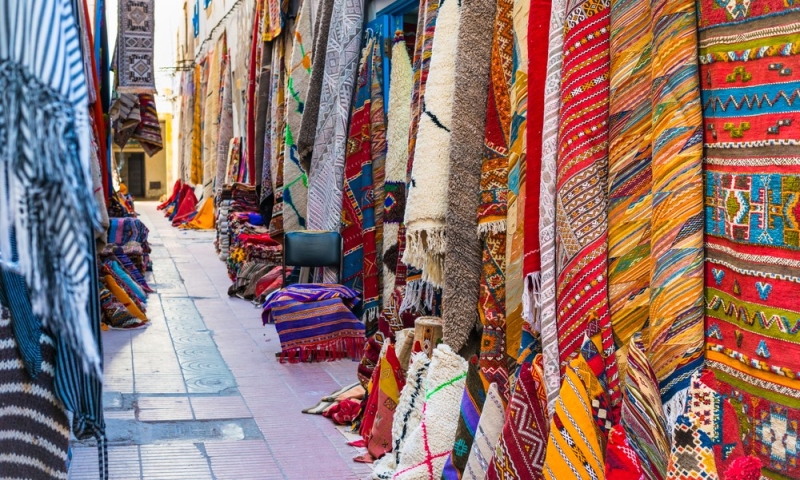
Just around the corner from the cathedral you will see a narrow alley at the end of which is a traditional Moroccan market selling carpets and silk scarves. There are many restaurants nearby with national dishes.
Carmen de los Martires Garden
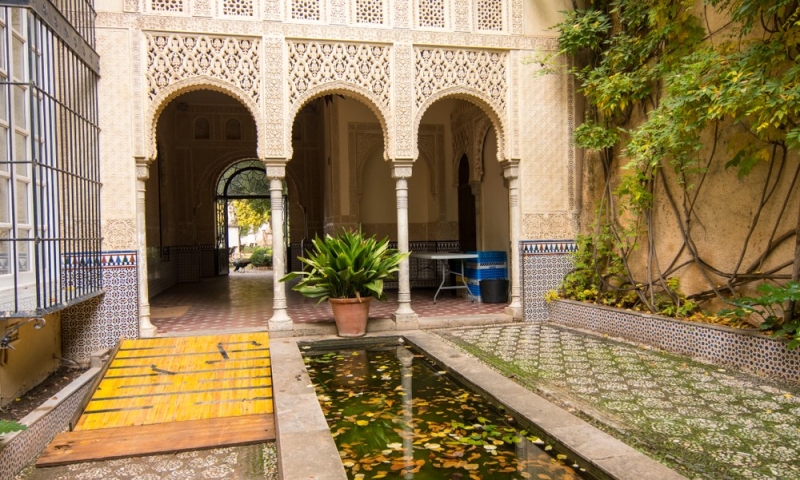
Casa Carmen – this is what traditional houses with a fenced garden are called in Granada. There are many of them here, but the most famous, large and accessible to tourists is Carmen de los Martires. Many Casa Carmen are private homes or museums of sorts that are only open for events. The house itself in Carmen de los Martires is also closed to the public, but anyone can wander through the gardens and hide in their shade on a hot day.
Royal monasteries
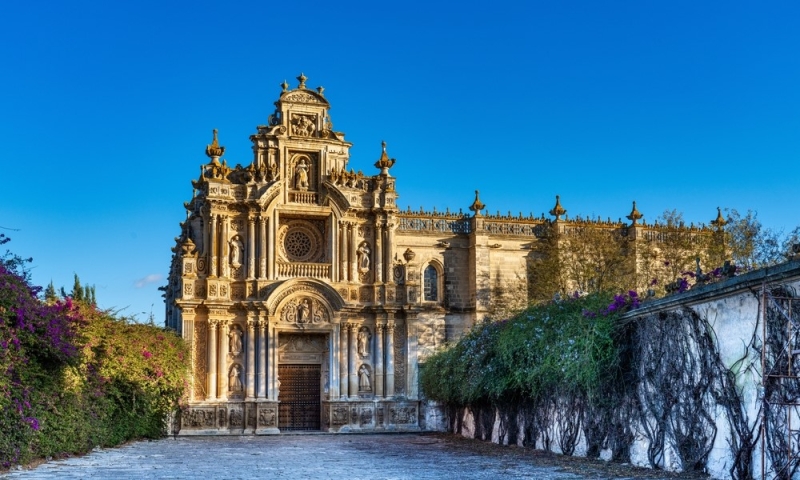
Monasterio de San Jeronimo is the first Catholic monastery in Granada. Inside there is a sacristy, which is called one of the best examples of Spanish Baroque architecture. The entrance ticket costs 4 euros (about 350 rubles*), you can enter the courtyard with orange trees for free.
Monasterio de la Cartuja was founded in the 11th century by a closed religious order of the Roman Catholic Church. Local monks, who have taken a vow of silence, lead a Spartan lifestyle. The interior of the monastery has been described as a “flamboyant explosion of ornament” – a mixture of marble carvings and Renaissance paintings with rich stucco on the ceiling. The entrance ticket costs 5 euros (about 450 rubles*).
Monuments of Andalusia
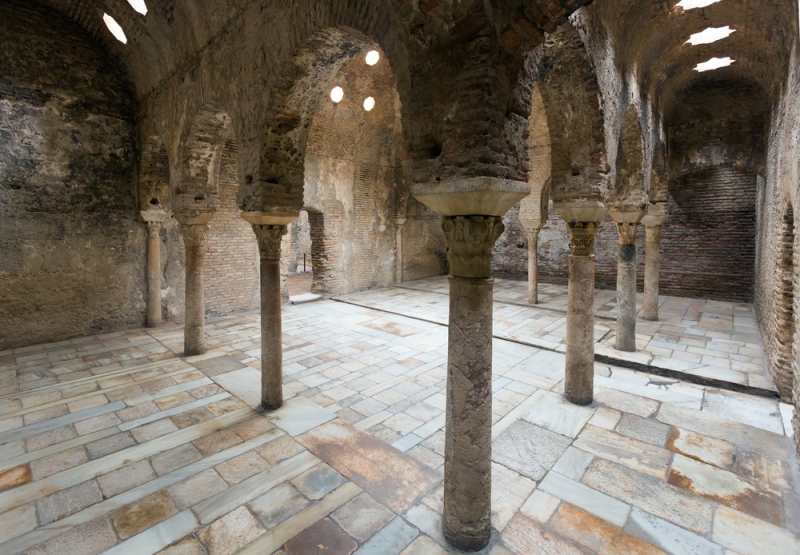
There are four Moorish sites in Granada: two of them are located near the Alhambra Palace, the others are located in another part of the city. The first is El Bañuelo – these are Arab baths that survived the Christian Reconquista.
The second attraction is the Corral del Carbón, a restored 14th-century building housing works of art dedicated to Granada.
Third – Palacio Dar al-Horra. This is a small palace near the Placeta de San Miguel Bajo. If you go up, you can enjoy views of both the Mirador de San Cristóbal observation deck and the Alhambra Palace.
The last one is Casa árabe de Horno del Oro. This is a Moorish house with a small patio; items from medieval life are displayed inside, and exhibitions are held in some rooms.
To visit all locations, you must purchase a single entrance ticket; it costs 7 euros (about 630 rubles*). But there is a life hack: on Sundays, admission to almost all places is free.
District Albaicín
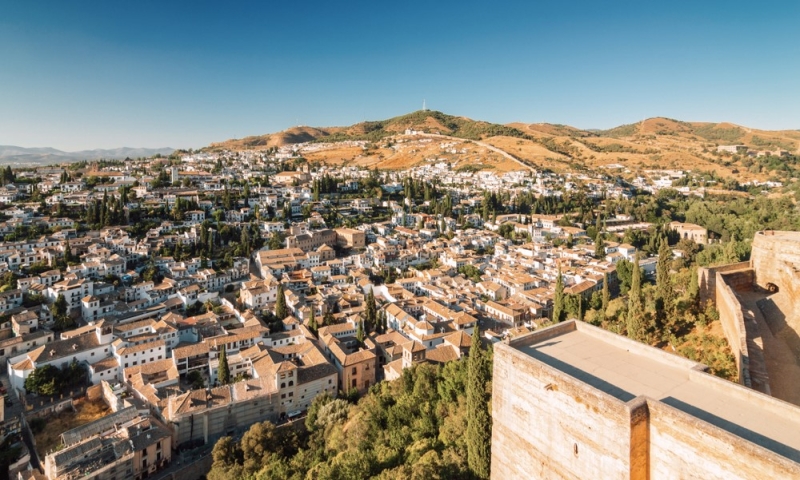
It is located on the slope of a hill overlooking the Alhambra Palace, offering a magnificent view of Granada and the surrounding mountains. All the houses, located in a labyrinth of narrow streets, are painted white, and there are pots of flowers in the doorways.
It’s not only interesting to wander among the quaint buildings, but the path here itself is breathtaking. From the center of Granada, you’ll walk along a stone promenade, along cobbled streets with neat bridges and up a hill – all with views of the Alhambra Palace on one side and the vibrant city on the other.
In the center of the area there are several observation platforms: Mirador de San Nicolás and Mirador Placeta de Carvajales. If you’re up for the climb, head up to the Ermita de San Miguel Alto chapel. This is the highest vantage point in Granada, offering views not only of the city and the Alhambra Palace, but also of the Albaicín region itself.
Sacromonte area
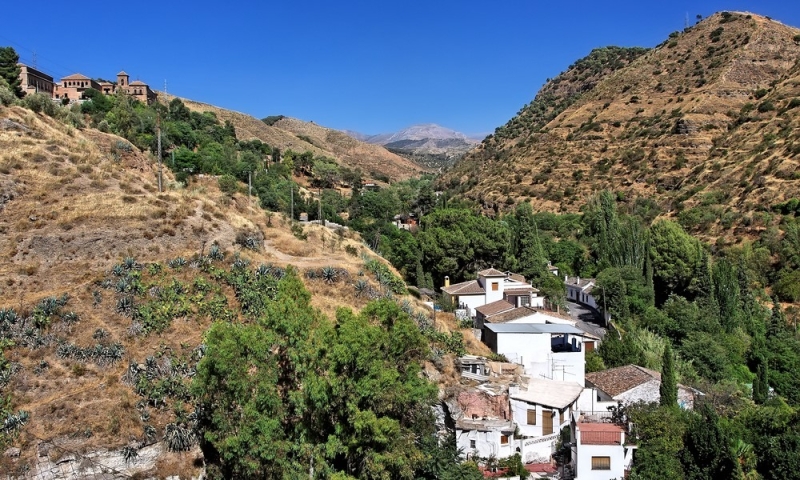
This is a former gypsy quarter east of the historical center of Granada. There is a legend that the famous Spanish flamenco dance, which is accompanied by songs and guitar playing, originated here.
The main attraction of the area is the Cuevas del Sacromonte Museum. These are several man-made caves, adapted for housing and outbuildings, repeating those in which the gypsies once lived. Nowadays vibrant flamenco concerts are taking place inside.
For those who love architecture and history, the Abadía del Sacromonte Abbey stands on a hill nearby. On the territory of the ancient monastery, underground chapels have been preserved and there is a museum where they will tell you about the history of the area.
Iznajar Village
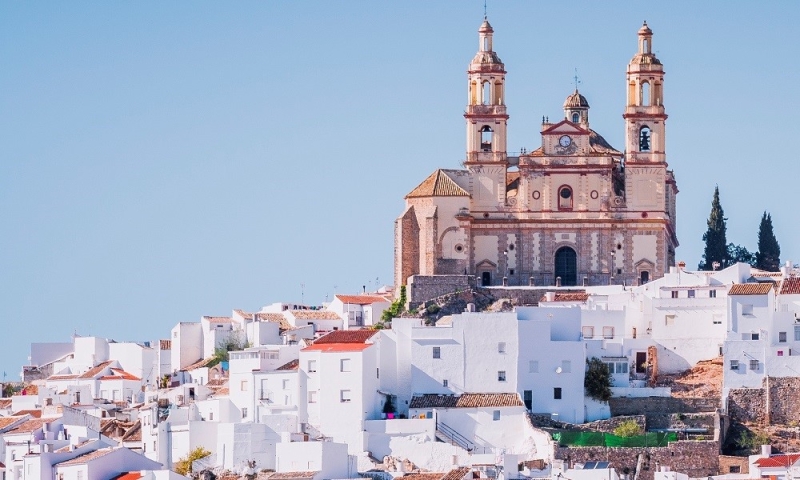
An hour’s drive from Granada by car or bus is the authentic village of Iznajar. It is located on a mountain overlooking a beautiful valley, olive grove and lake. This is one of the famous “White Villages of Andalusia” or Pueblos Blancos. They are called that because all the buildings are painted white. Iznajar is famous for its flower festivals, which take place here every summer.
The village is also famous for its local products: olives, tangerines and wine. Don’t pass by the home restaurants, where you will be happy to be treated to local cuisine.
Sierra Nevada
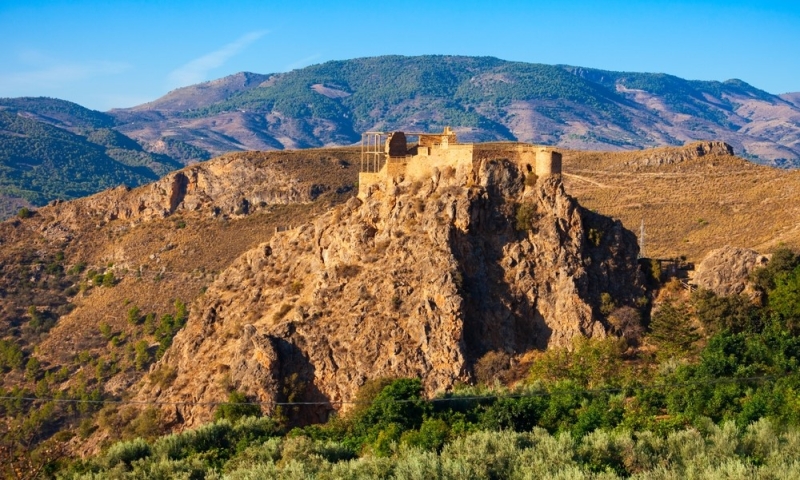
This is the third highest mountain range in Europe, it is here that the peak of Mulacin is located – the highest on the Iberian Peninsula.
Sierra Nevada National Park is located 20 km south of Granada. There are hiking trails and bike paths from which you can admire views of the snow-covered mountains and meet wild animals – hares, roe deer and foxes. In addition, many historical monuments have been preserved in the national park. For example, Tablate Bridge and Lanjaron Castle.
*Prices are current at the time of publication.

